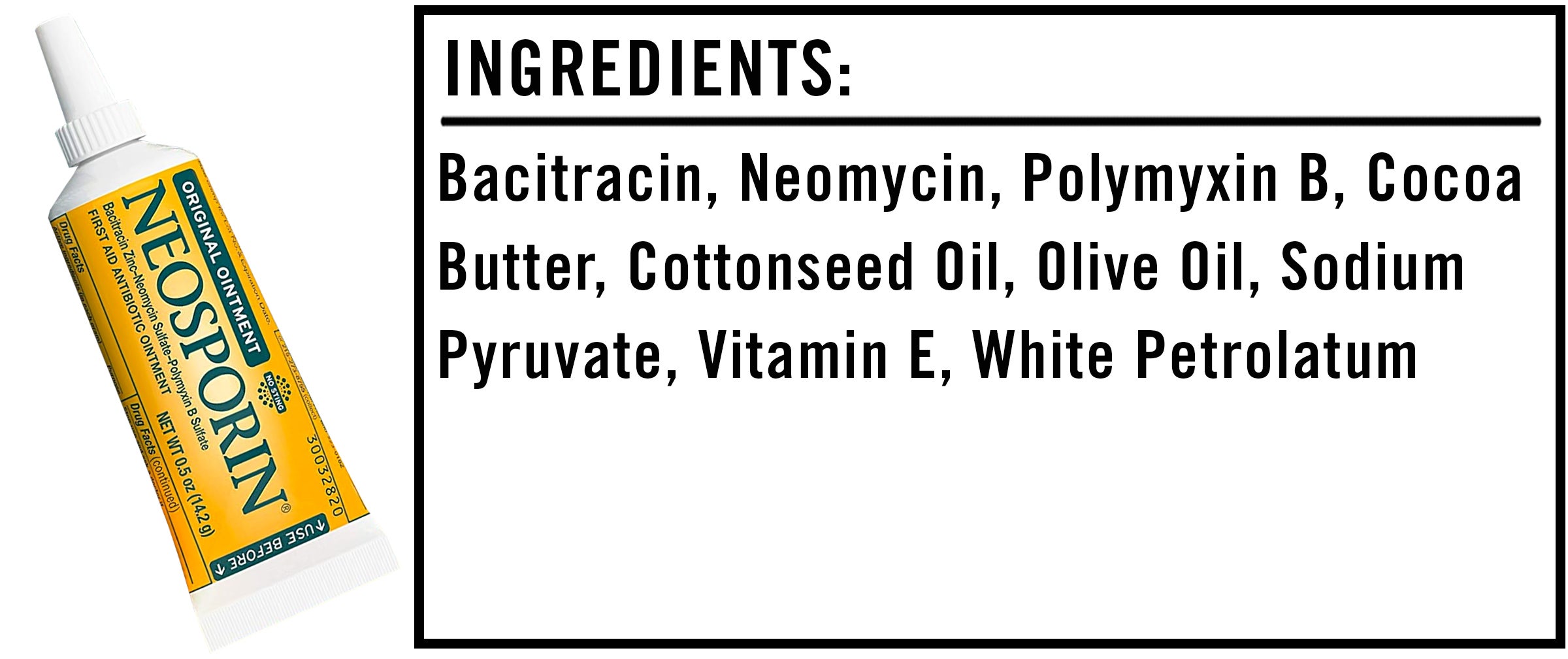We’re often told that you should never eat anything (or put anything on your body) if you don’t recognize everything on the ingredients list. But since most of us have no idea what xanthan gum or potassium benzoate are — or more importantly, what they’re doing to our bodies — we’re decoding the ingredients in the many things Americans put in (and on, or near) themselves.
This edition: Neosporin Original Ointment, which is made from nine separate ingredients that we’ve broken down in the exact order they appear online.

The Ingredients
1) Bacitracin: Bacitracin is a basic antibiotic that prevents minor skin infections by stopping the growth of certain bacteria. While a few studies have shown that antibiotic ointments like Neosporin can help some abrasions heal quicker and with less pain, others have found that petroleum jelly (like Vaseline) works just as well, if not better. In fact, overuse of Neosporin may lead to the development of antibiotic resistance — one study suggests that topical antibiotics have already contributed to a widespread rise in antibiotic-resistant infections — so use Neosporin sparingly and never on large areas of skin.
2) Neomycin: Neomycin is another simple antibiotic. Note, however, that Neosporin can sometimes cause allergic reactions, and neomycin is the cause in most cases. When this happens, some people confuse the reaction for an infection and apply even more Neosporin, which only makes the condition worse. So, if your wound is getting worse after applying Neosporin, consider paying your doctor a visit.
3) Polymyxin B: Polymyxin B is the last of three antibiotics in Neosporin. The combination of bacitracin, neomycin and polymyxin B can prevent a wide range of infections.
4) Cocoa Butter: The high fat content of cocoa butter forms a protective barrier over the skin to hold in moisture. More than anything, though, it feels nice on the skin and provides a spreadable base for the antibiotic ingredients in Neosporin.
5) Cottonseed Oil: Like cocoa butter, cottonseed oil contains fatty acids and some nutrients that moisturize the skin and may have mild anti-inflammatory properties.
6) Olive Oil: This is in Neosporin for virtually the same reasons as cottonseed oil.
7) Sodium Pyruvate: Sodium pyruvate is an organic salt believed to stimulate collagen production, which would hypothetically improve your skin. However, more evidence is needed to prove this.
8) Vitamin E: Vitamin E is important for skin health and may be beneficial at reducing UV damage.
9) White Petrolatum: This is simply petroleum jelly, which as you may remember, does a fine job of moisturizing and protecting the skin while it heals.
The Takeaway
Despite Neosporin promising a smoother healing process, there are some good arguments for only using it if an infection actually develops, as opposed to routinely applying it on every cut, bite and scrape. In fact, minor wounds should heal just fine if kept clean and maybe covered by a thin layer of petroleum jelly. However, if you have any medical conditions that prevent your body from healing correctly, make sure to talk to your doctor.

